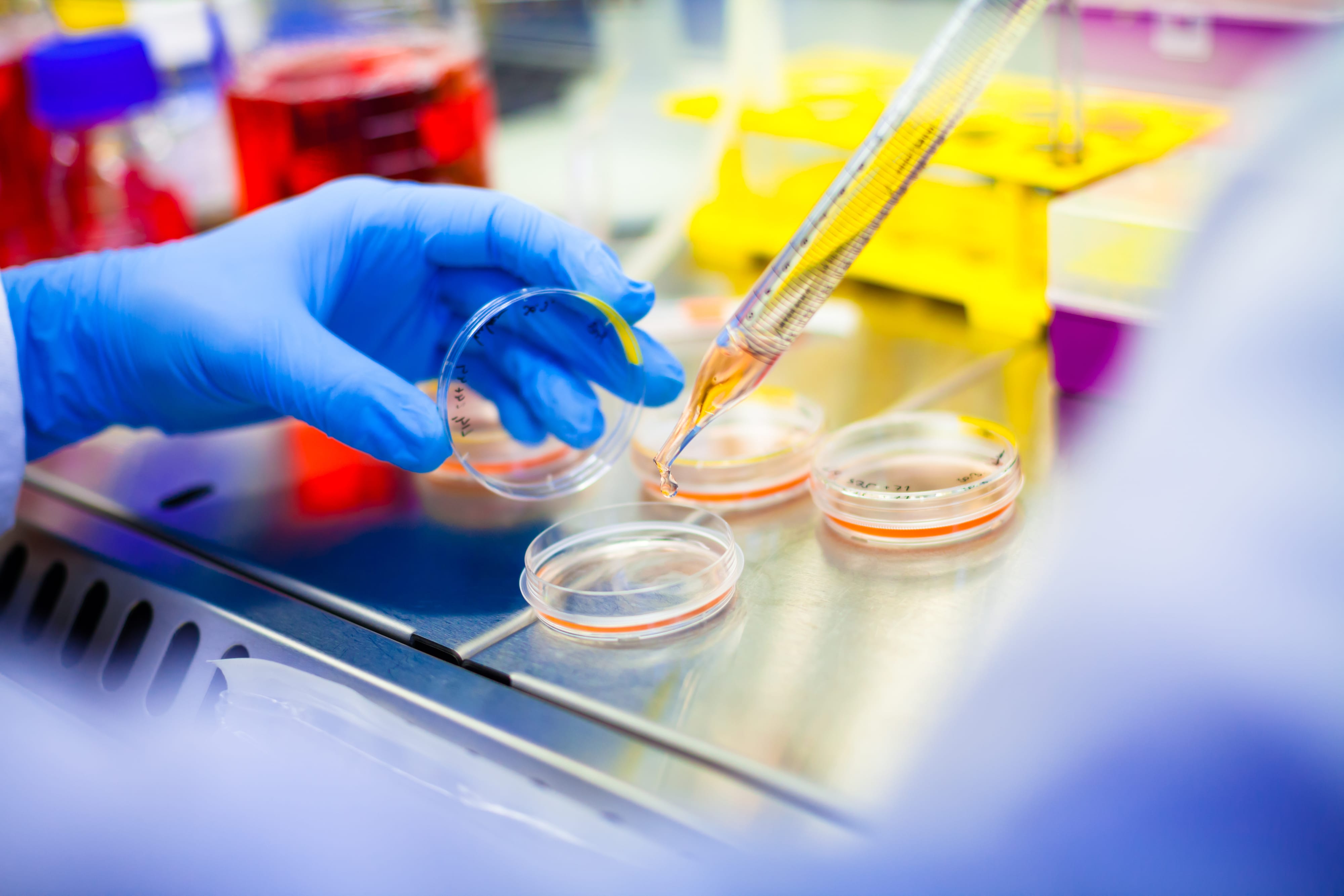
Biologics
Driving innovation within the manufacturing, process development, and design of biological drugs.
Driving innovation in product, processing, and manufacturing technologies for biologics
With world-leading assets and expertise in process development, characterisation and production, we help overcome challenges to move promising biotherapeutics from lab bench to patient, working with everything from recombinant proteins to antibodies, VLPs and gene therapies.
CPI’s expertise and world-leading facilities are tackling the unique challenges in designing, developing, and scaling biologic drugs.
Biologics are an important class of medicines serving patients most needing novel therapies. They are leading to treatments for previously unmet clinical conditions, such as for people with cancer, immune disorders, and chronic diseases; for example, we recently collaborated with Intract Pharma, SGS Quay Pharma, and Pharmidex to develop the first oral formulation of infliximab, which could be life-changing for those affected by Inflammatory bowel disease.
Additionally, biologics form the foundation of many vaccine candidates and gene therapy techniques. Modalities such as RNA, virus-like particles and viral vectors can be used to target novel therapies for the prevention and treatment of disease.
Due to their complexity and specificity, biologics can be used for highly targeted and personalised treatment. Gene therapy can treat rare diseases caused by a single gene. Children with severe combined immunodeficiency (SCID) have already received this treatment. However gene therapy techniques can also target acquired disorders, such as leukaemia.
We bring expertise in the growing field of gut microbiome therapeutics to the table. Our understanding of the human microbiome has exploded in recent years. And there’s still more to learn about microbiome diversity. Novel therapeutics targeting the gut may soon be able to treat conditions such as depression. Manipulating microbiome diversity could also help manage disease.
What are the manufacturing challenges of biologics?
Biologic drugs are rich in potential, but there’s much yet to do. Biologics are more sensitive than small molecules to changes in manufacturing processes, which makes scale-up and large-scale production challenging. Their show – usually requiring cell culture – is costly and associated with low yield and solubility problems. Companies are also held back through a lack of facilities, manufacturing and production skills and expertise, and access to analytical methods for characterisation.

How is CPI enabling biologics solutions?
We can help you overcome challenges in biologics manufacturing, providing a bespoke solution for your product. The state-of-the-art facilities at our Darlington site comprise 130 BSL1 and BSL2 flexible laboratories, allowing us to develop cost-effective GMP-compliant processes. We utilise specialised scaled-down and high-throughput systems to accelerate the development and optimisation of your bioprocesses before scale-up to maximise your product's yield, purity and quality.
Our National Biologics Manufacturing Centre is home to a highly skilled team of industry experts, technicians, and scientists experienced across a range of disciplines within biopharmaceutical development and manufacture.
We offer manufacturing solutions for microbial, mammalian, cell-free, yeast and insect expression systems for various products, including monoclonal antibodies, viral vectors, recombinant proteins, RNA, DNA, and microbial therapeutics. We’re working with our partners to develop probiotic and prebiotics supplements, synbiotics, and microbial vaccines that deliver live bacteria to the gut microbiome.
We’re keen to help push forward the exciting possibilities of gene therapy techniques. One aspect of our work in this field is developing adeno-associated virus (AAV) and lentivirus exosome platforms for commercialisation. We’re optimising transfection, cell growth and workflows to increase the robustness and scalability of our partners’ AAV gene therapy platforms.
How we ca help
Our support can design, develop, optimise, and demonstrate manufacturing processes bespoke to your biologic.


